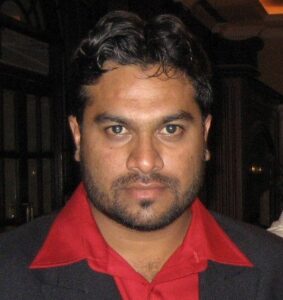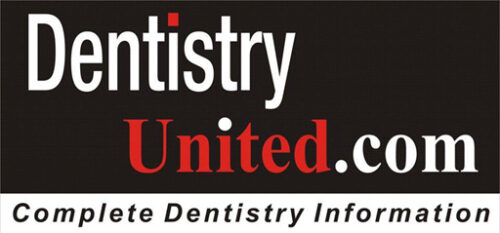Prologue
This morning, as the golden edge of dawn filtered through my window, I found myself reading about the life of Steve Jobs. His journey—marked by brilliance, rebellion, and an unyielding search for meaning—has always intrigued me. There was something hauntingly poetic in how a man who revolutionized human connection was ultimately undone by a disease so silent, so insidious. Somewhere between his words on simplicity and mortality, a thought began to stir within me.
I paused, staring at the steam rising from my cup of coffee, and a strange question took root: Could the mouth—our humble gateway to speech, nourishment, and emotion—hold whispers of a disease that silenced one of the greatest storytellers of our time?
It was then that I came across a recent scientific revelation—one that spoke not of gadgets or technology, but of bacteria and life’s hidden codes. A study suggesting that our oral microbiota, those microscopic citizens of the mouth, may foretell the earliest signs of pancreatic cancer.
And just like that, a blog was born—not from curiosity alone, but from a quiet sense of awe. For within the simplest act of a smile, or a swallow, perhaps lies a map to understanding life, death, and everything that connects the two.
—Syed Nabeel
In the intricate interplay between host ecology and neoplastic transformation, the oral cavity emerges not merely as a portal for commensal ingress but as a potential prognostic nexus for distal malignancies. A compelling prospective cohort investigation, harnessing metagenomic scrutiny of salivary effluents from over 122,000 ostensibly healthy individuals, unveils dysbiotic signatures within the oral bacteriome and mycobiome that presage the inexorable march toward pancreatic cancer—a neoplasm whose abysmal five-year survival hovers perilously at 13%.
This elucidation, drawn from the venerable cohorts of the American Cancer Society’s Cancer Prevention Study-II Nutrition Cohort and the PLCO Cancer Screening Trial, transcends prior retrospective forays by anchoring microbial perturbations to incident disease with temporal fidelity. Methodologically rigorous, the inquiry deployed whole-genome shotgun sequencing for bacterial profiling and internal transcribed spacer amplicon analysis for fungal delineation, unmasking a pantheon of taxa implicated in oncogenesis.
Among the periodontal redoubts, the triad of Porphyromonas gingivalis, Eubacterium nodatum, and Parvimonas micra—archetypal protagonists in gingival dysbiosis—emerged as harbingers of augmented hazard. A broader bacteriome-wide interrogation, fortified by ANCOM-BC2 compositional analytics, discerned 13 additional bacterial species conferring elevated odds, juxtaposed against eight protective counterparts. Mycobial incursion was epitomized by the Candida genus, whose proliferative dominion portended peril. Collectively, these 27 microbial sentinels coalesced into a microbial risk score (MRS), wherein each standard deviation increment correlated with a multivariate odds ratio of 3.44 (95% CI, 2.63-4.51) for pancreatic adenocarcinoma, a quantum leap beyond the incremental perils of traditional confounders such as tobacco exposure or metabolic derangements.
For the odontologist and oncologist alike, this tapestry intimates a paradigm shift in etiopathogenic paradigms. The oral milieu, long maligned as a mere nidus for localized periodontitis, now stands indicted in systemic immunopathogenesis. Chronic gingival inflammation, mediated by these keystone pathogens, may engender a cascade of Toll-like receptor agonism, cytokine dysregulation, and metagenomic translocation—facultative vectors for distant acinar metaplasia. Conceivably, lipopolysaccharides from P. gingivalis or fimbrial adhesins from P. micra could seed pancreatic stroma via hematogenous dissemination, fostering a protumorigenic niche through NF-κB hyperactivation or PD-L1 upregulation. Such hypotheses, while associative rather than causal, resonate with burgeoning evidence from murine orthotopics wherein oral gavage precipitates ductal aberrations.
Clinically, the salience for interdisciplinary stewardship is unequivocal. Salivary metagenomics proffers a noninvasive, cost-efficacious oracle—surpassing the venesection exigencies of serum CA19-9 or the radiation encumbrance of multiphasic CT. Envision a triaged armamentarium: periodontal probing depths fused with MRS computation to stratify at-risk cohorts, prompting intensified surveillance via endoscopic ultrasound or magnetic resonance cholangiopancreatography.
For the dental savant, this mandates recalibration of prophylactic imperatives—beyond plaque ablation to targeted antimicrobials or probiotics modulating Candida overgrowth. Yet, caveats abound: the MRS’s discriminant acuity awaits external validation across ethnoracial strata, and longitudinal flux in microbial consortia vis-à-vis neoplastic latency remains terra incognita.
As stewards of holistic health, we advocate for collaborative endeavors that unite periodontology with gastroenterologic oncology. This microbial missive from the mouth may yet herald a renaissance in pancreatic cancer interdiction, transmuting a silent assassin into a preemptible adversary. Future inquiries must dissect functional metagenomics—CRISPR perturbations, perhaps—to causally dissect these symbionts, while clinical trials assay MRS-guided interventions. In the interim, let us heed the whisper of the oral ecosystem: in its disequilibrium lies not just periodontal peril, but a clarion for oncologic vigilance.

Dr. Syed Nabeel, BDS, D.Orth, MFD RCS (Ireland), MFDS RCPS (Glasgow), is a clinician-scholar whose career spans over two decades at the intersection of orthodontics, neuromuscular dentistry, and digitally integrated diagnostics. As Clinical Director of Smile Maker Clinics Pvt. Ltd., he has pioneered a philosophy of care rooted in anatomical precision, occlusal neurophysiology, and contemporary AI-enhanced workflows. A Diplomate in Orthodontics from Italy and an alumnus of advanced programs at Various International Universiteis , Dr. Nabeel brings a globally benchmarked clinical acumen to the nuanced management of temporomandibular disorders, esthetic rehabilitation, and algorithm-guided orthodontics.
In 2004, he founded DentistryUnited.com, a visionary platform connecting over 40,000 dental professionals through peer learning and collaborative dialogue. His academic drive led to the launch of Dental Follicle – The E-Journal of Dentistry (ISSN 2230-9489), a peer-reviewed initiative now indexed in EBSCO, fostering interdisciplinary scholarship across clinical domains.
A prolific educator, he has contributed to UGC and national broadcast media as a subject expert and regularly speaks at scientific forums, favoring small-group, discussion-based formats that emphasize clinical realism over theoretical abstraction. His ethos remains steadfast: knowledge, when shared freely, multiplies in value. Dr. Nabeel continues to shape the future of dentistry through research, mentorship, and his enduring commitment to elevating practice standards in India and beyond.
